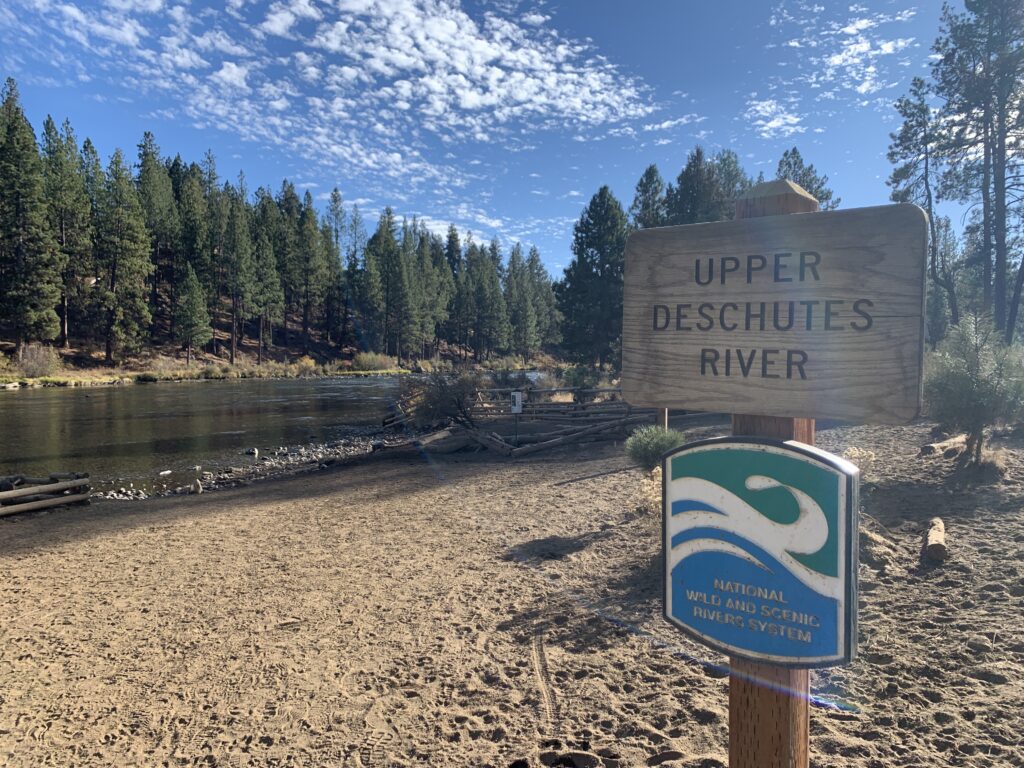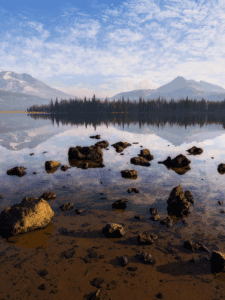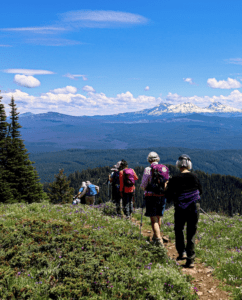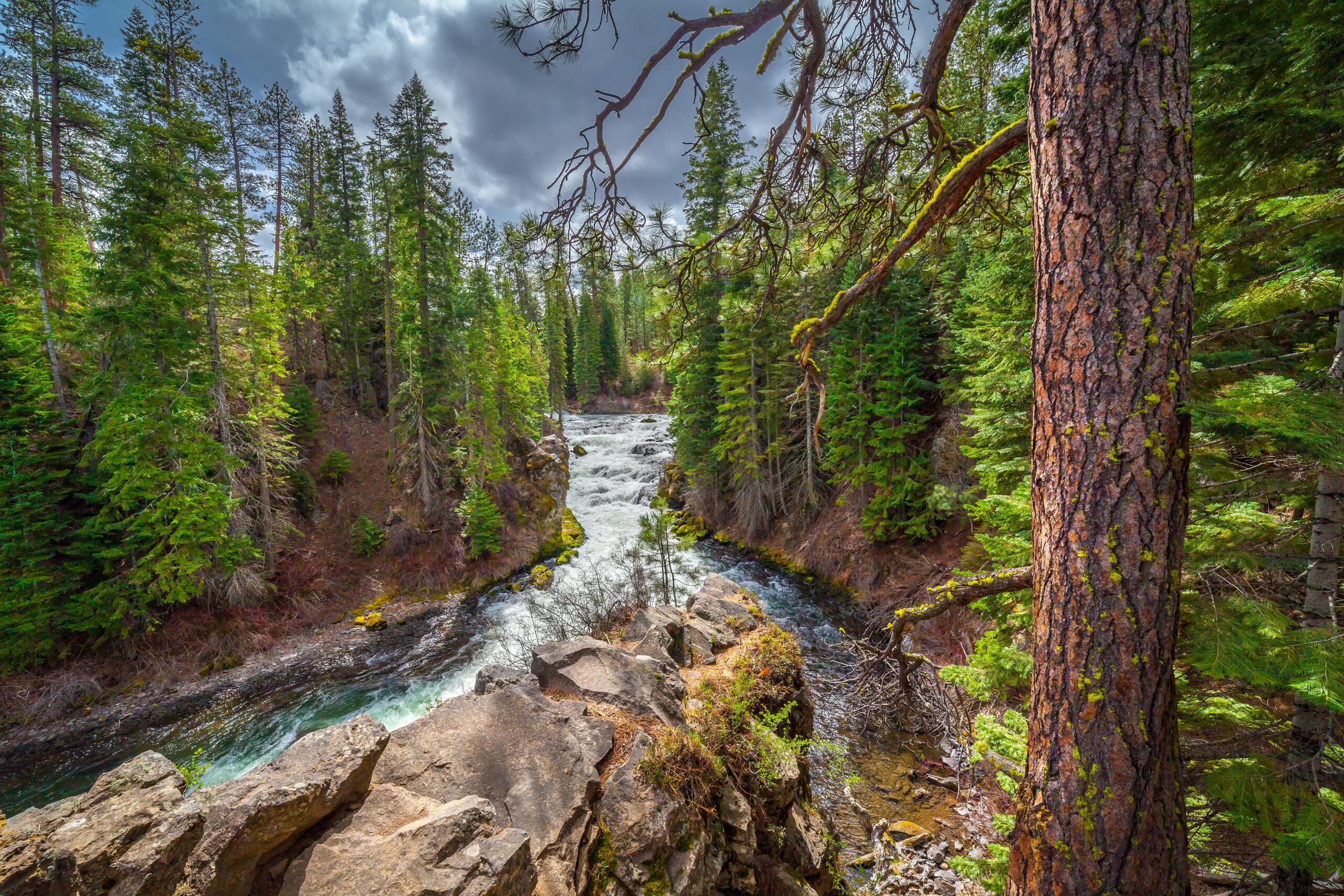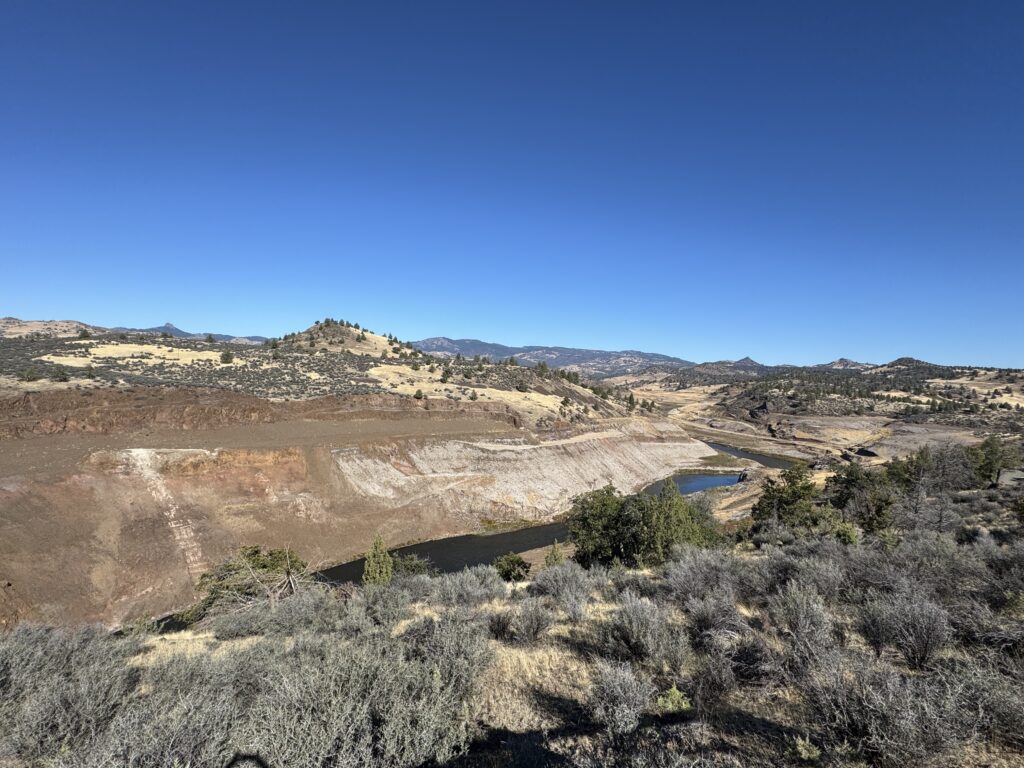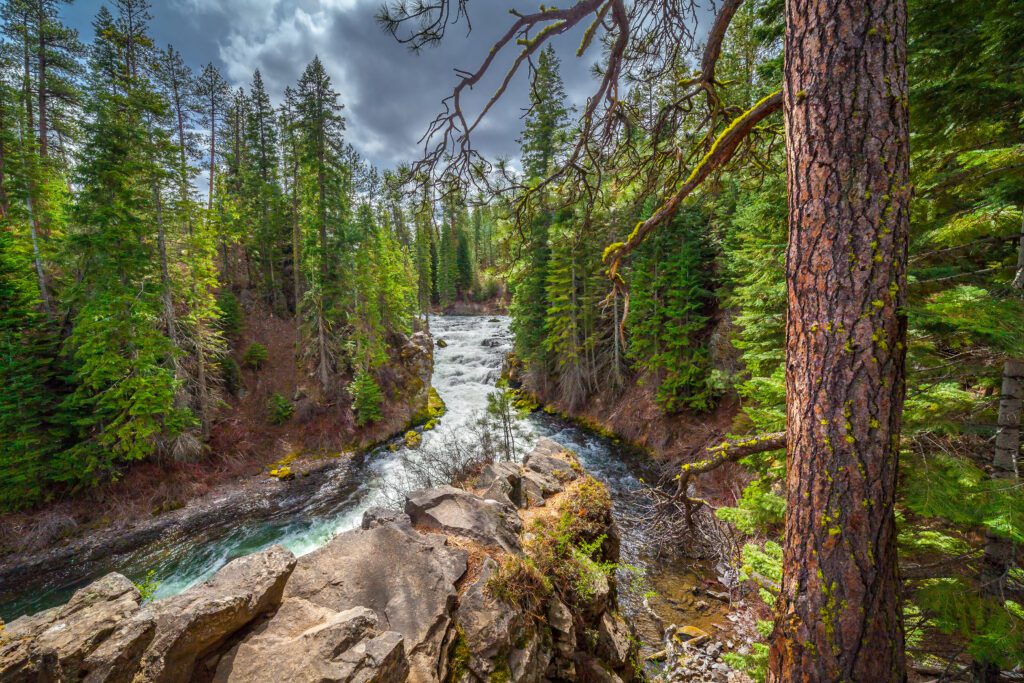The Upper Deschutes River originates in the Oregon Cascade Range as snow melts off Mt. Bachelor and the Three Sisters Wilderness into Little Lava Lake. This exceptionally cold, clean water eventually flows north over 250 miles to its confluence with the Columbia River.
The unique hydrology and geology of this watershed have helped support diverse ecosystems, sustained human civilizations since time immemorial, and made the growth of the central Oregon cities of today possible. Today, the area is a beloved outdoor recreation destination. However, with accelerating climate change and overuse, the future of the Deschutes and all that rely on it is uncertain.
The River Democracy Act would protect over 3200 miles of streams across Oregon for the important values they provide, including dozens within the upper Deschutes River basin. Read on to learn more about this key watershed and how the River Democracy Act would safeguard it and the communities that rely on it for generations to come.
Outdoor Recreation
The upper Deschutes River and its tributaries flow through the Deschutes National Forest, one of the most visited National Forests in the state, which provides opportunities for year-round recreation. The river itself is renowned for its fishing and paddling opportunities, and hikers, mountain bikers, and cross-country skiers have a wealth of trails to explore nearby. Campgrounds and day-use areas can also be found all along the various streams that comprise the Deschutes watershed.
Some can’t-miss activities include fly fishing the Fall River, paddling Hosmer Lake, and hiking the Tumalo Falls area.
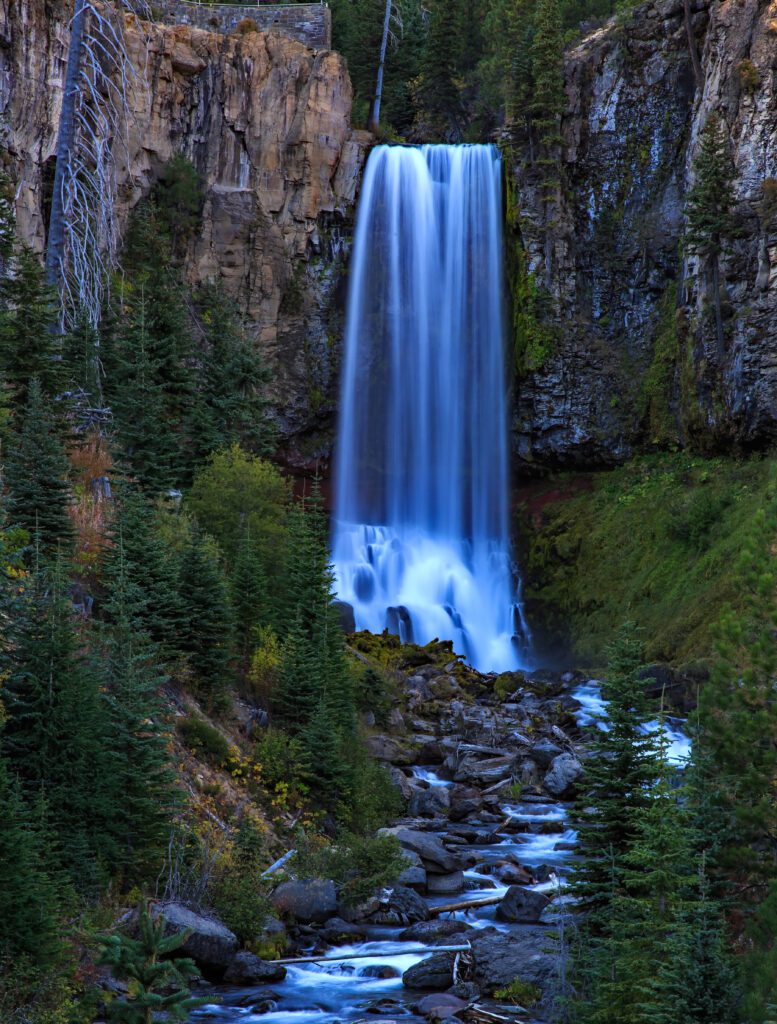
Recreation Spotlight: Tumalo and Bridge Creek Loop
This 7.2-mile loop hike follows multiple proposed Wild & Scenic Rivers and brings hikers up close to dozens of spectacular waterfalls flowing through a mixed conifer forest full of lodgepole pine, mountain hemlock, Engelmann spruce, subalpine fir, and white fir. The best waterfall hike near Bend!
Learn more about this hike and other hikes near River Democracy Act streams in our River Democracy Act Hiking Guide
Wildlife Habitat
The meadows, forests, high desert, and subalpine environments of the upper Deschutes River provide a diversity of important habitat for a wide range of wildlife species, including listed species like bull trout and Oregon spotted frog.
Bald eagles, osprey, and other birds of prey are commonly spotted along the river corridor. Mule deer and elk are also abundant, beaver and river otters are found in both the Deschutes and its tributaries, and two known wolf packs have become established in the basin in recent years (wolves are native to this area, but were eradicated for decades before returning to their former habitats in recent years).
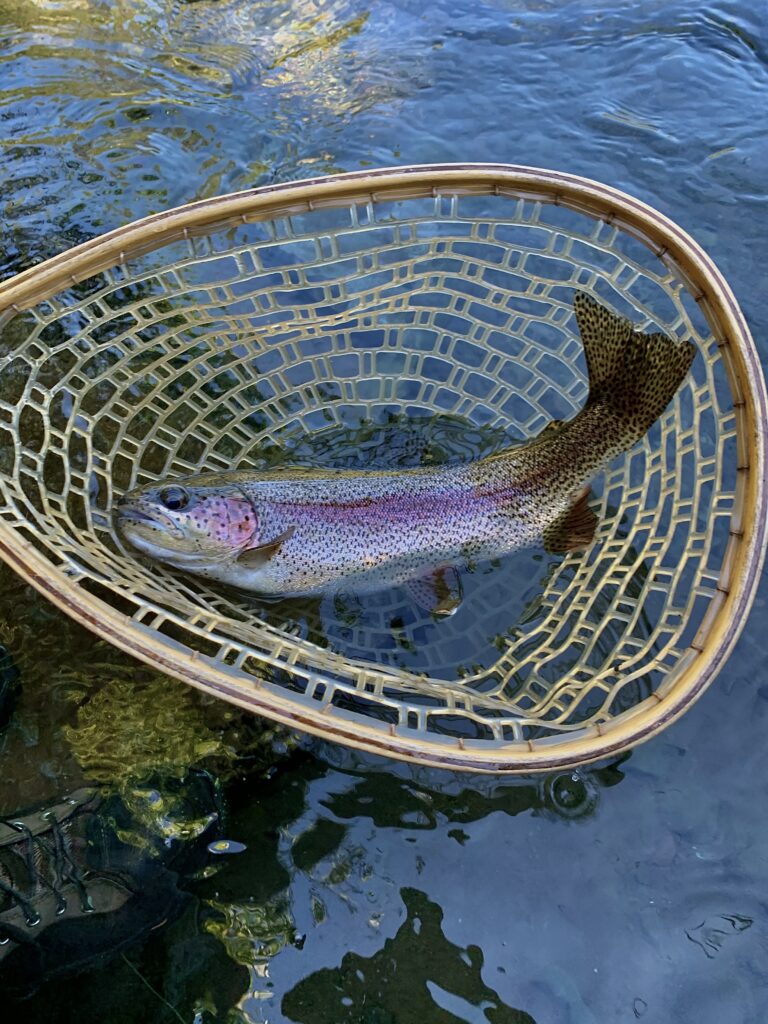
Species Spotlight: Redband trout
Redband trout are a subspecies of rainbow trout that have adapted to the drier climates east of the Oregon Cascade Range. They are similar in appearance to a rainbow trout, but can be distinguished by larger, more rounded spots and a rosy red stripe along their side. Currently, redband trout occupy approximately 42% of their historic range. Primary threats to redband populations include habitat degradation and fragmentation, impacts from climate change including drought, and introduction of nonnative species.
Geology
The upper Deschutes River has a fascinating geologic history and a unique hydrology. Volcanic activity has shaped the region and this river, creating massive underground aquifers, springs that carry cold, clean water back to the surface, and lava flows that stretch for miles and construct the many falls and whitewater rapids of the Deschutes and its tributaries. Despite its location in the semi-arid climate of central Oregon’s high desert, the Deschutes once had some of the most stable year-round flows in the world. It is also the world’s largest spring-fed river.
However, due to the increasing impacts of climate change, development, and overuse, the river’s streamflows and course have been modified, leading to negative impacts on water quality and quantity, fish and wildlife, and downstream communities.
Learn more about the geologic history of the upper Deschutes River and the current threats to it by watching our past webcast, “A River Through Time: The Geologic History of the Upper Deschutes River Basin.”
Drinking Water
Over 100,000 people in Bend rely on Bridge Creek, in the Tumalo Creek watershed–a major tributary of the upper Deschutes, for clean drinking water. Bridge Creek is another spring-fed stream that originates near Broken Top mountain in the Three Sisters Wilderness and joins Tumalo Creek below the scenic Tumalo Falls before flowing towards the Deschutes. Tumalo Creek is one of the few but critical tributaries providing a steady flow of cold, clean water to the upper Deschutes.
Intact, forested watersheds, especially those flowing through public lands, play a vital role in ensuring the quality and quantity of our water sources. These natural ecosystems act as invaluable sponges, absorbing, filtering, and gradually releasing water, contributing to the consistent flow of clean water to downstream communities. The streams of the Tumalo Creek watershed flow through designated Wilderness areas, Roadless Areas, and mature and old-growth forests, depositing consistent, cold, clean water into the taps of Bend’s residents and the Deschutes River.

Threats to this watershed
Each fall, the river’s flow out of Wickiup Dam is reduced dramatically to store water over the winter for the next year’s irrigation season. When the agricultural season begins the next spring, flows are increased once again to levels much higher than they naturally would be.
For a river system that has evolved with historically stable streamflows, this annual reduction and increase has led to more bank erosion, water quality issues, and has negatively impacted native species like trout and Oregon spotted frog. Streamflow gets so low so quickly in the fall that thousands of fish end up trapped on the bank within days of the flow reductions. Fortunately, most of these fish are saved by volunteers in an annual fish rescue event outside of Bend, but more work is needed to protect water quality and quantity in the Deschutes.
This watershed is also experiencing more frequent and prolonged drought from the accelerating impacts of climate change on precipitation, snowpack, and annual temperatures. All of these factors translate to less cold, clean water in the upper Deschutes basin.
River Democracy Act
The River Democracy Act, co-sponsored by Senators Ron Wyden and Jeff Merkley, would designate the headwaters of the upper Deschutes River and other important tributaries in the watershed as Wild & Scenic Rivers, providing additional safeguards for water quality, fish and wildlife habitat, and outdoor recreation opportunities.
In total, the River Democracy Act would protect over 3,200 miles of streams all across Oregon.
Destructive activities like mining and dam building are prohibited in and along Wild & Scenic Rivers, and other projects like commercial logging and road-building that negatively impact the landscape are tightly regulated so as to not degrade the river and river values. The River Democracy Act extends these safeguards a half-mile from each river bank, offering enhanced protections for critical waterways and watersheds.

Streams in the upper Deschutes basin proposed for protection include essentially all the major tributaries in the watershed, such as Bridge Creek and Tumalo Creek, the Fall River, Paulina Creek, the Little Deschutes River, and Quinn Creek, which flows into Hosmer Lake. These are the streams that provide refuge for fish and wildlife, cold, clean water to the Deschutes, and help mitigate the impacts of drought, climate change, and overuse.
Take Action
The River Democracy Act is currently making its way through Congress, but it needs your help getting across the finish line! Senator Ron Wyden developed and championed the bill, and Senator Jeff Merkley has co-sponsored it. The upper Deschutes watershed falls within Congresswoman Janelle Bynum’s district, and we need her to support this important legislation and protections for the Deschutes.
Take action today and help protect the Deschutes River watershed and hundreds of other Oregon waterways by signing on as a Citizen Co-sponsor and urging your members of Congress to pass the River Democracy Act!
